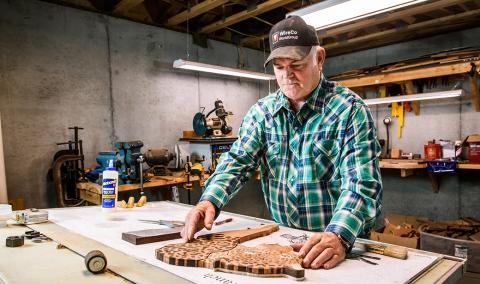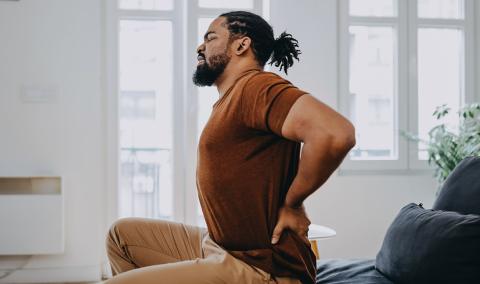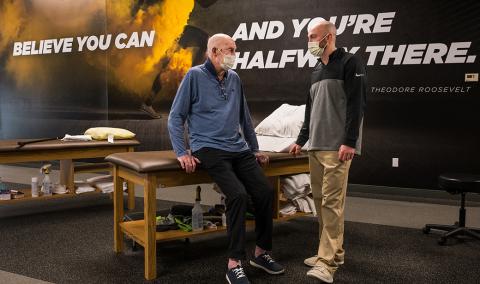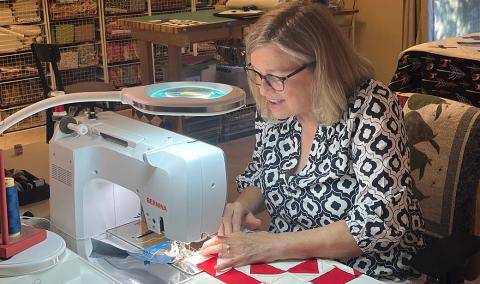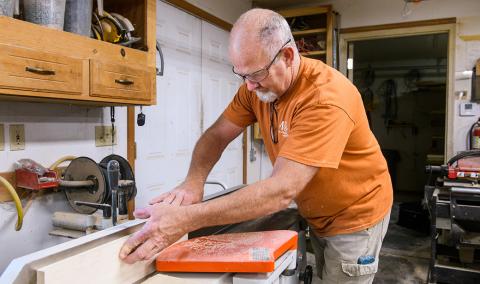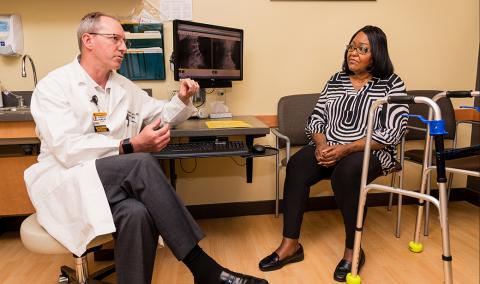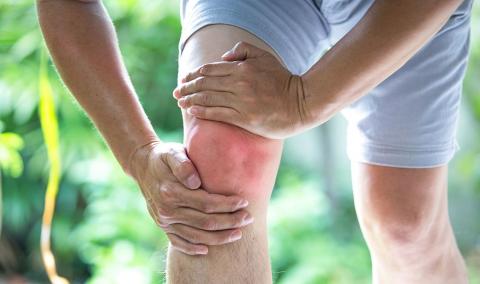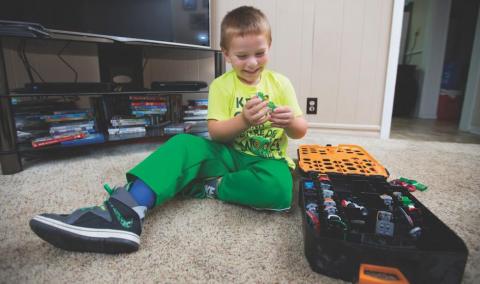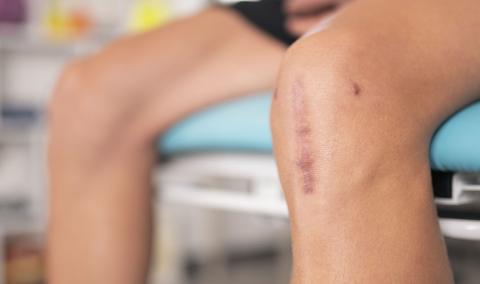When back pain gets in the way of your daily activities, you don’t have to suffer through it. MU Health Care can treat your symptoms so you can get back to living life to the fullest.
You’ll likely experience back pain, at least once, either caused by routine activities or an underlying health condition. And you may feel pain in your lower, middle or upper back — or a combination of the three — that lasts for short or long periods of time. All of these factors can make back pain difficult to diagnose and treat.
At MU Health Care, we have the expertise to pinpoint the root cause of your back pain and quickly get you relief. Our pain management doctors and spine surgeons are here to help you every step of the way.
What Does Back Pain Feel Like?
When you have back pain, you may experience:
- Shooting or stabbing pain
- Tingling or numbness that can radiate down your legs
- Intense muscle aches or spasms
- Limited flexibility
- Difficulty walking or standing up straight
You can feel back pain in one or more areas:
- Lower back (lumbar)
- Middle (thoracic)
- Upper back
You may experience one or more symptoms for short or extended periods of time:
- Sudden (acute) back pain usually lasts from a few days to a few weeks. It can feel like a sharp pain or a dull, constant ache.
- Ongoing (chronic) back pain can last for more than three months.
Causes of Back Pain
There are many possible causes for your back pain. More common causes are injury or accident (like a sudden fall or lifting something too heavy), muscle sprains or poor posture. Less common causes can stem from a medical condition.
Medical Conditions That Cause Back Pain
- Chronic arthritis: A long-term stiffness and tenderness in your joints.
- Degenerative disc disease: The cushioning between the vertebrae in your spinal column gradually deteriorate.
- Infections: Certain infections may cause back pain, like a kidney infection or osteomyelitis, which is a bone infection.
- Osteoporosis: Your bones become weak and brittle.
- Spinal deformities: An irregular curve in your spine.
- Spinal stenosis: The canal surrounding your spinal cord narrows.
- Tumors: Back pain can be a symptom of noncancerous (benign) or cancerous (malignant) spinal tumors, or metastatic tumors that have spread to the spine.
Given the many causes of back pain, it's important to get an accurate diagnosis and treatment for the underlying problem.
How We Diagnose the Cause of Back Pain
At your first appointment, our team will:
- Go over your medical history.
- Perform a physical exam to determine your flexibility and range of motion. This may include testing reflexes and muscle strength, checking for areas of tenderness and evaluating your posture.
- Assess the functionality of your spinal nerves through a neurological exam (tests focused on your mental status, reflexes and more).
- Order imaging tests, such as X-rays or MRI scans, to better identify the source of your pain.
How We Treat Back Pain
At MU Health Care, our goal is to provide back pain relief and improve movement. If at-home treatments like rest, heat therapy or ice therapy don’t provide relief, we can help. Our team will work with you to find a more effective nonsurgical or surgical treatment option.
Nonsurgical Treatments for Back Pain
- Chiropractic care: Techniques like joint manipulation, soft tissue therapies and tailored exercises can heal injuries and alleviate pain.
- Physical therapy: A personalized treatment plan is developed based on your daily activities, the location of your pain and your goals.
Our spine experts also offer more advanced nonsurgical treatment options and use minimally invasive techniques whenever possible. This means you can recover and return to your daily life faster. Techniques include:
- Injection therapy: Medication is delivered directly to your affected area. Types of injections include Botox, epidural and nerve blocks. They may provide relief ranging from a few days to a year, or even longer.
- Neurostimulation: A device, about three inches in size, is implanted under your skin, usually near your stomach or upper buttocks. This device sends mild electrical signals near your spine to disrupt pain signals to your brain.
- Radiofrequency ablation (RFA): Extreme heat is used to destroy the nerves that send pain signals to your brain.
Back Surgery
- Anterior lumbar interbody fusion (ALIF): One of spine surgeons will fuse, or combine, two or more vertebrae of your spine together using a minimally invasive incision through the front of the abdomen with assistance of a vascular surgeon. This indirectly relieves the pressure on the nerves without directly approaching the spine from the back.
- Laminectomy: A posterior lumbar laminectomy involves removing your lamina, a bony arch that protects and supports your spinal cord like a roof. This alleviates the pressure on the nerves and or spine cord.
- Microscopic discectomy: During this procedure, one of our highly skilled spine surgeons uses a high-powered microscope to better see your damaged area. Through a small incision, they can remove small pieces of disc, bone and ligament while leaving your healthy pieces untouched and maintaining structural stability of the spine.
- Oblique lumbar interbody fusion (OLIF): During this procedure, one of our experienced spine surgeons will fuse, or combine, two or more bones of your spine together.
- Transforaminal lumbar interbody fusion (TLIF): In this procedure, our surgeons will access the spine from the back to remove a damaged disc in the lower back. They’ll then place an implant between the affected vertebrae to remove pressure on nerves and stabilize the spine with a fusion.
Preventing Back Pain
While not all back pain can be prevented, there are certain steps you can take to minimize your risk for developing back pain. Or you can reduce the severity of it, if you do experience it:
- Keep your muscles strong. Exercise regularly to strengthen your core muscles that support your spine.
- Practice proper lifting techniques, such as bending at the knees and keeping your back straight.
- Maintain good posture while sitting, standing and walking.
- Don’t smoke, as smoking can worsen the disc degeneration that can lead to early onset of back pain.
- Maintain a healthy weight to reduce the strain on your spine and other joints, and lower your risk of back pain.





